India is the second largest exotic fruit producer in the world. This is because a country with a diverse climate and culture can produce various fruits and is therefore not limited to the production of Mangoes, Citrus Fruits, and Bananas. The perishable sections of supermarket aisles and the vast array of fruits on stalled carts of street hawkers are reminders of the changing seasons in the country. Some exotic fruits are tropical.
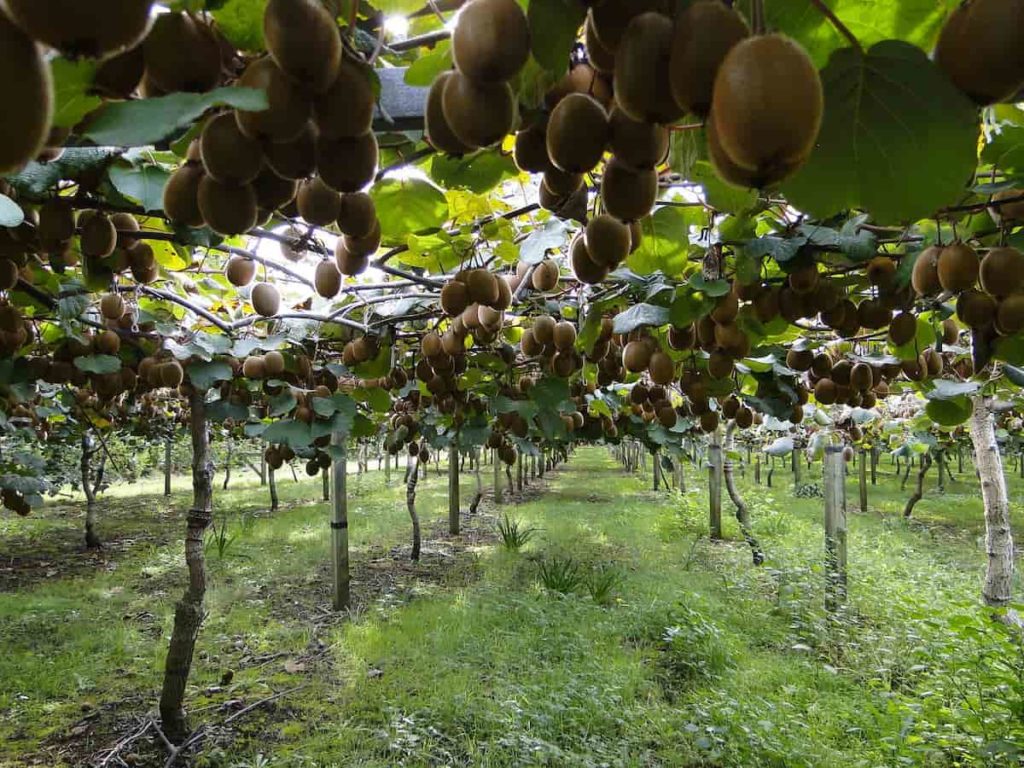
Exotic fruits are largely influenced by changing consumer habits and the health benefits they provide. Due to their wonderful taste and numerous health benefits, many consumers are eating plant-based foods and incorporating exotic fruits into their daily diet.
How to Start Exotic Fruit Farming in India
Advantages of Exotic Fruits
It will bring a refreshing change to your platter. You can experience your exotic tropical vacation home while enjoying these exotic fruits. Huge funds are invested in scientific research on exotic fruits and their health benefits.
Exotic fruits fill the shops in the off-season for fruits. For example, local Apples are usually available during the winter season, while imported apples are always available and are finally becoming more popular. It helps produce collagen, which keeps the skin, ligaments, tendons, and cartilage healthy. And vitamin C also helps to boost immunity.
Growth of Exotic Fruit Business in India
The exotic fruit business is largely influenced by evolving consumer habits and their many health benefits. Many consumers are embracing plant-based foods and incorporating nutritious exotic fruits into their daily eating habits due to their amazing taste and numerous health benefits.
Farmers from Himachal Pradesh to the southern states of Kerala and Karnataka are interested in cultivating exotic fruit varieties to earn good returns. Foreign produce costs more and carries a premium of 50 percent or more over local fruit.
How to Grow Exotic Fruits
All of the exotics are suitable for growing in patio tubs or containers. If you’re planting in a container, choose one that’s a good size for the subject you’re growing. A plant loaded with foliage and fruit can easily topple over in a small container in strong winds. An ideal patio container is plastic, concrete, a wooden half-barrel, or tub. If planting in tubs, good drainage is essential. Holes should be drilled in the base and possibly the sides of the container. Avoid standing the container where it will fill with water. Ideally, the container should be on a couple of house bricks or gravel to help drainage.
Despite being described as ‘exotic,’ many of our subjects are UK winter hardy and suitable for planting outside on the open ground. As with many things in life, remember that a little extra care and time invested in planting will pay dividends for many years.
Dig a hole about twice as wide and twice as deep as the container in which the plant was grown. Now use a fork on the sides and bottom of the hole to loosen the surrounding soil before backfilling to correct the soil level. To give your plant the best start, you can replenish it with the soil you originally dug or, ideally, with that soil and 25% organic matter, such as well-rotted compost (not fresh) or compost.
In case you missed it: Exotic Vegetable Farming in India: Check How this Growing Guide Helps Beginners
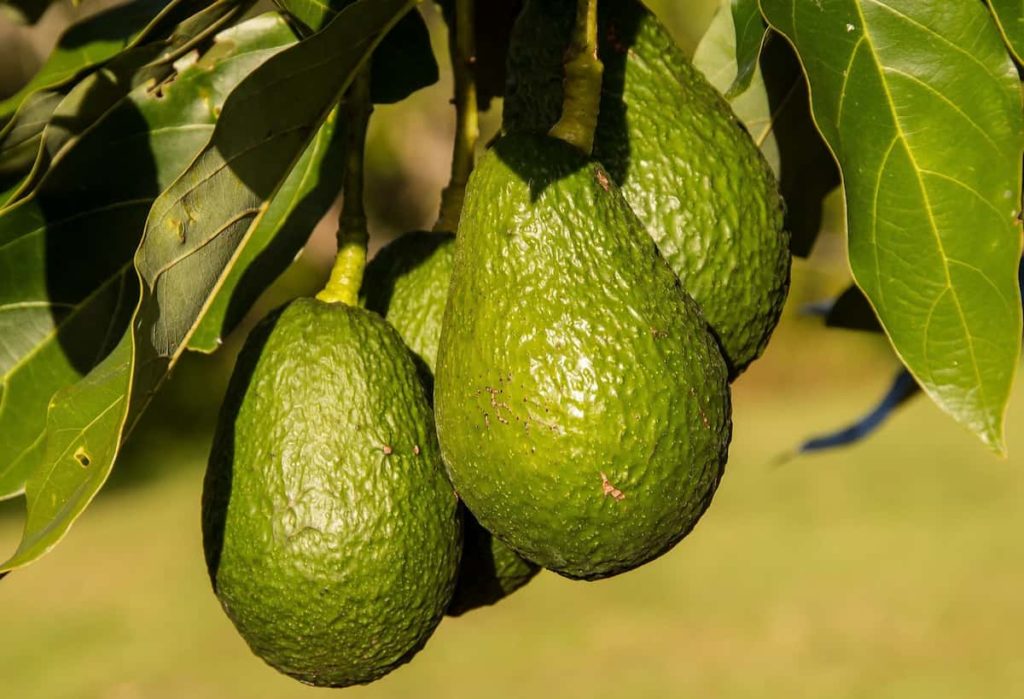
Place the plant in the hole, ensuring the final planting depth is the same or slightly deeper than it was first planted (indicated by a soil or compost mark on the stem). Backfill with previously removed garden soil or your own soil/compost mix. If the soil is dry, cool it in a well and water it. Under no circumstances should you use any stimulants, fertilizers, or bone flesh when planting, as these products will ‘burn’ any new root growth and may slow your plant’s growth.
Keep the area around the base of your plant free of weeds and grass that will otherwise compete for moisture and nutrients. To further help retain moisture, it’s a good idea to mulch your plant with chipped bark, well-rotted compost, or similar. It will also help suppress weed growth.
Conditions for growing exotic fruits
Most exotic fruit plants need a southern location near a house or other structure that provides protection and warmth during the winter. Also, exotic fruit plants need well-drained soil with plenty of organic matter.
New fruit plants should be watered frequently to keep the root ball moist. Watering several times a day may be necessary during the year’s hottest months. Never use chemical fertilizers on exotic plants during the first two years. A healthy layer of compost will provide beneficial nutrients as it breaks down.
Choose the right fruits – Before starting anything, look at the fruits you want and can grow. Good exotic fruits include Passion, Kiwi, Pineapple, Guava, and Avocado. These fruits are quite hardy and can withstand low temperatures if damaged. Install professional equipment. You must ensure you get the best ingredients so that the tastiest fruit is possible. Firstly, invest in a greenhouse or high-quality polytunnel; you can find the best ones at companies like Premier Polytunnels. In the polytunnel, you can adjust the temperature and light as you wish to suit the needs of your exotic fruit.
Before planting your fruit, check for specific requirements online or consult an expert at a garden center; some fruits need to be planted in the open ground, while others are better suited to growing in tubs and containers. Always make sure you plant with extra care to give your plant the best start in life.
Aftercare – Once you’re done with fruit selection and planting, you must ensure you take care of your planting. During the first season, ensure your plants are properly watered; watering them heavily once a week is often recommended. Pruning your fruit trees is important every season to encourage your trees to grow properly.
Growing exotic fruits in your garden can be a daunting task; however, being able to eat the fruits you grow is well worth the time and effort. Summer is when all these fruit species do most of their growth and produce the bulk of their fruit. This is why proper feeding at this time of year is critical to success with tropical fruits. Along with water and mulch, feeding must be about all the care you need to perform on your tropical fruit during the growing season other than feeding.
In case you missed it: Winter Season Vegetables and Fruits in India
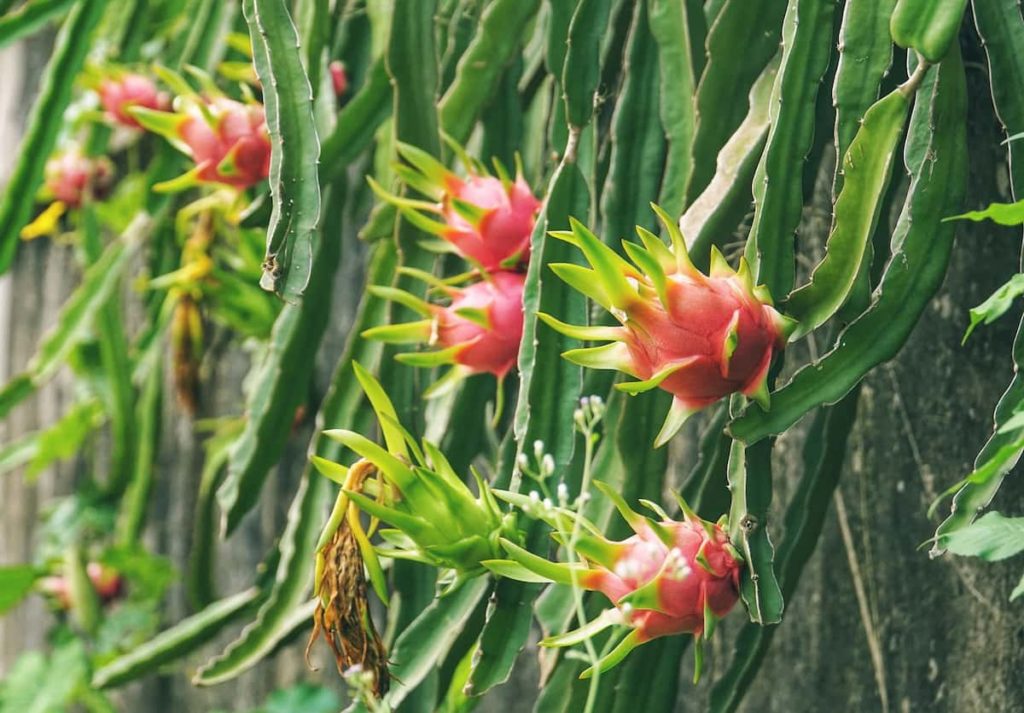
Water is the most important ingredient in growing these crops, and a thick, thick layer of mulch around your tropical fruit trees will make them, the soil, and your wallet very happy. That layer of mulch will help your soil absorb five times more water than soil without a layer of mulch. It will insulate the root system and keep it cool in hot weather. Mulch will also prevent valuable water evaporation from the soil, saving you money. It will improve the soil quality as it decomposes and forms humus, a favorite food of your garden companions, earthworms.
Feeding tropical fruit trees is very basic. Doing it naturally will save you extra effort, and the plant foods you use will last longer, feed the plant more naturally, and free your environment from toxic chemicals will not harm.
List of Exotic Fruits in India
1. Japani Phal or Persimmon
It was introduced to India by European settlers, although it was a native of China. It is grown in the Himalayan region, especially in Jammu and Kashmir, Uttarakhand, and the Nilgiri Hills. The distinctive feature of the Japani fruit is that it physically resembles a tomato.
The Japani fruit has numerous health benefits, packed with vitamins and minerals. Fully ripe fruits can be soft, delicious, and sweet. Rich in vitamin C, carbohydrates, and potassium.
A temperate fruit, Japani fruit is the local Himachal name for the exotic, deep orange-red, succulent persimmon. The ripe fruit is soft, sweet, and a gastronomic delight. The fruit is native to China and was introduced to India by European settlers in the early 20th century. It also contains manganese, which helps maintain healthy mucous membranes and skin and protects against lung and mouth cancer.
2. Water Apple
It is botanically known as Syzygium samarangense from the Myrtaceae family. It’s not an apple. It is a tropical fruit and grows in Southeast Asia, including southern India, Indonesia, and Malaysia. It is a medium-sized tree; if planted in the ground, it can reach a height of more than 8 meters.
Water Apple, also known as Rose Apple, provides immense health benefits like boosting immunity and promoting heart function. The edible fruit is a yellow berry 2 to 4 cm in diameter. Its internal structure expands to the point of forming a hollow fruit with a seed that rings like a bell. However, its pulp has the consistency of an apple and the scent of a rose, hence its various names.
Rose apples can be eaten raw or served to make an aromatic liqueur. It is grown in its native region and has been introduced as a fruit tree or ornamental plant in many tropical regions. The flesh is white, crisp, or spongy with a mild aroma. The taste is sweet in most varieties. Sweet fruit varieties are usually used fresh or in fruit salads. In tropical Asia, the young leaves are often used as a wrap before cooking or boiling. Many varieties of Water Apples grow in Southeast Asia, and most differ in skin color, texture, and flavor.
In case you missed it: Best Place to Buy Plant Seeds Online in India: For Vegetables, Flowers, Fruits, Herbs, and Hybrid Seeds
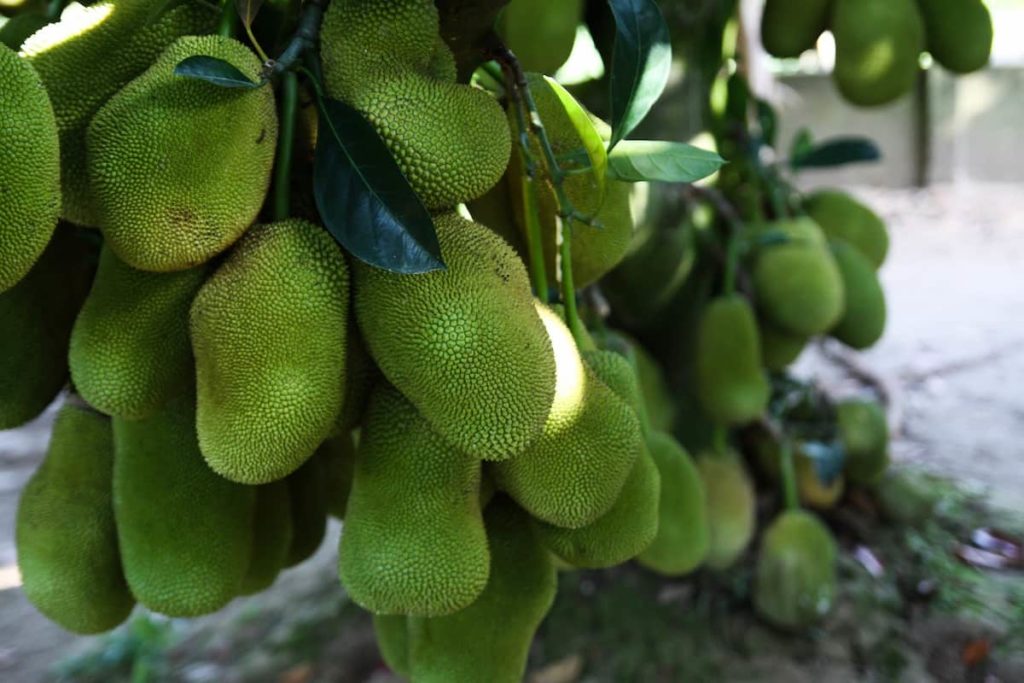
3. Jackfruit
It is an exotic tropical fruit with a sweet flavor consumed in many parts of the world. It is the official fruit of Kerala and has recently been declared. Therefore, the fruit deserves our first mention. Jackfruit is a large fruit that hangs from trees and is highly nutritious in its ripe and raw form. Peeling a jackfruit is an art, and the fleshy fruit inside is worth the fun. This fruit can be used to make many Kerala-style dishes.
4. Longan (Dimocorpus)
Longan fruit is a white-fleshed exotic fruit belonging to the Sapindaceae family. It is a tropical tree species that produces edible fruit. It is native to southern China and the hills of Assam and Meghalaya. Growth and flowering require a cool climate, soil pH of 6 to 6.5, and sensitivity to acidic soil conditions. In India, West Bengal and Bihar are prominent Longan growing states. The tree stands 9 to 12 meters in height and 8 meters in width, with many branches.
5. Rambutan
The Rambutan fruit is closely related to Lychee and Longan and is edible and tropical. You can’t miss the fruit in shops and supermarkets as their bright red, sticky exterior demands. The fruit originated in tropical Southeast Asia and then spread to Africa, Central America, and Arab countries. It is grown in tropical countries such as Thailand, Malaysia, Indonesia, the Philippines, and Australia. It grows on a medium-sized tree, which is related to the litchi. The seed in the heart is not edible. This fruit is very popular in Southeast Asia, where many good properties are attributed to this fruit. Rambutan means hairy, referring to the shades on the fruit’s skin.
6. Avocados
Avocados are cultivated well in tropical and subtropical climates. The fruits can be grown in a wide range of non-saline soil pH levels of 5-7. It cannot withstand hot, dry winds or frost. In India, Avocado is grown on a limited scale in the eastern Himalayan states of Tamil Nadu, Kerala, Maharashtra, Karnataka, and Sikkim.
Avocados need to be grown in pots on a sunny patio in the summer months and moved into a greenhouse or conservatory in the winter to protect them from cold, dampness, and frost. In a container, avocados reach a height of 5-7 feet (1.5-2 meters). Fruits usually appear 12-18 months after flowering. The fruit will continue to grow on the tree but will not ripen until picked.
7. Breadfruit
There is an ongoing debate about whether Breadfruit is a fruit or a vegetable. Nevertheless, it is very similar to jackfruit, and raw must be cooked like potatoes or yams before it can be used. The tropical fruit is cultivated in the southern state of Kerala, coastal Karnataka (parts of Mangalore), but originated from New Guinea through the Indo-Malayan Peninsula to western Micronesia. The Breadfruit is found in the tropical rainforests of Indonesia, the Philippines, Sri Lanka, and South India.
In case you missed it: Paper Towel Seed Germination Process: for Vegetables, Fruits, Flowers, and Herbs
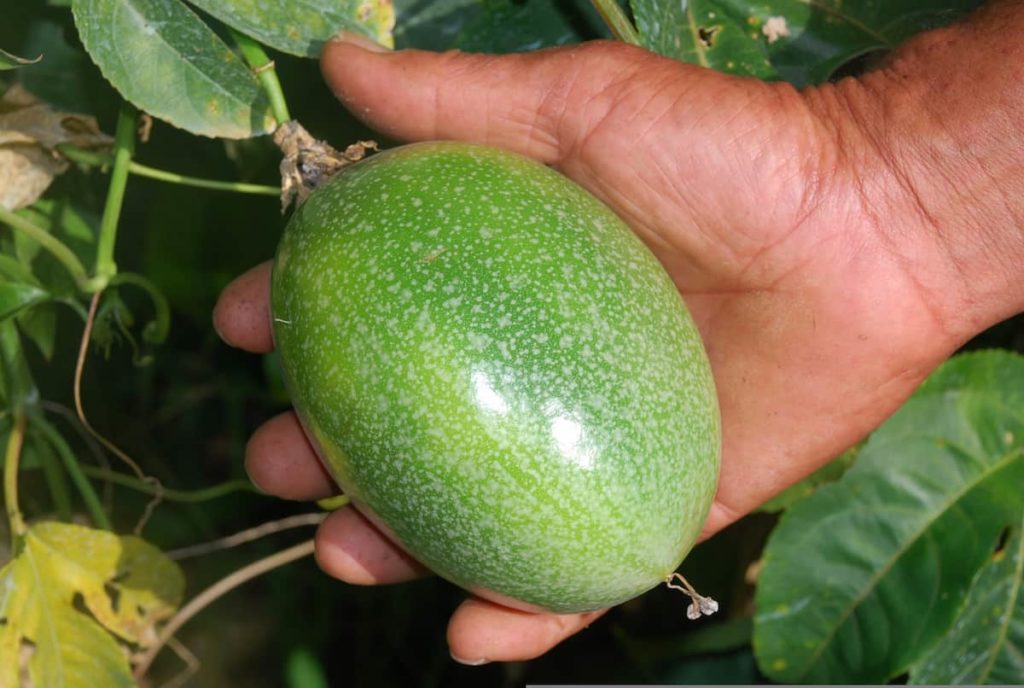
8. Kiwi
Kiwi fruit grows well in hot and humid climates. It needs moist and well-drained, fertile soil. But protecting your kiwi plant from strong winds is very important as they can easily damage it. Kiwi is one of the most exotic fruits ever known, native to a large area of China, especially the forests of the Yangtze River Valley. Introduced to New Zealand in 1904, it has since been cultivated in many temperate regions for its edible fruit. Summer pruning involves removing long, arching vines extending beyond the developing fruit. Any non-flowering vines that overgrow the trellis can also be removed in summer.
9. Jungle Jalebi/ Kodukkapuli (Kemachile)
Like the Indian Sweet jalebi, the greenish-pink pods of Jungle Jalebi (or Kodokapuli) contain about 6-10 shiny black seeds encased in a thick, sweet, edible pulp. Jungle Jalebi is native to Mexico, America, Central Asia, India, the Caribbean, Florida, and the Philippines. It is found in Tamil Nadu, Kerala, Maharashtra, Karnataka, Andhra Pradesh, and West Bengal.
10. Passion Fruit
Place your plant in a sunny, sheltered spot in a pot or open ground with vertical support for twining vines. In colder regions, you may need to overwinter it indoors. Passion fruit is a berry that grows on the passion fruit plant, also known as the passion fruit vine. Passion fruit is easy to grow.
It belongs to a large family of grape plants, some are ornamental, and many produce edible fruit. The delicious fruit is usually eaten raw or juiced. Grow passion fruit in soil rich in organic matter. Water the fruit vines abundantly with a spirit of water and feed them with tomato compost (high in nitrogen)—train passion fruit vines up wires or a trellis. A mature vine can be 15 to 30 feet tall and 10 to 25 feet wide. An entire plant can cover a large trellis or fence—plant passion fruit in partial shade in very hot areas. Passion fruit is a vine that grows quickly—plant passion fruit where it can climb a trellis or chain-link fence.
11. Dragon Fruit
The dragon fruit tree is grown as an ornamental fruit plant. It can tolerate poor soil and temperature changes but grows best in tropical climates and areas with low rainfall. Dragon fruit is an exotic fruit. Dragon fruit plants grow well at high temperatures. Dragon fruit can be cultivated in all soil types with proper drainage and good fertilizer density. It cannot be cultivated in waterlogged land. The tropical climate is suitable for the cultivation of dragon fruit.
Dragon fruit plant also needs less rain, but it needs more warm weather, and if there is frost in winter for a long time, the yield will be lost. Dragon fruit plants enjoy warm weather and are often planted in full sunlight; too much sun in dry or particularly hot areas can damage the stem. The main key is that their soil is moist, rich in organic matter, and well-drained.
If you neglect to prune dragon fruit, fungal disease and insect infestation will increase. It can result in poor light penetration for tangled central stems, affecting fruit production. Regular pruning promotes flower growth and prevents the plant from becoming too heavy for its growing trellis. Plants can begin flowering in six to eight months, although container-grown plants can take up to two years to bear fruit.
In case you missed it: A Guide to Understanding Mango Tree Propagation: From Seed, Cuttings, Grafting, and Budding
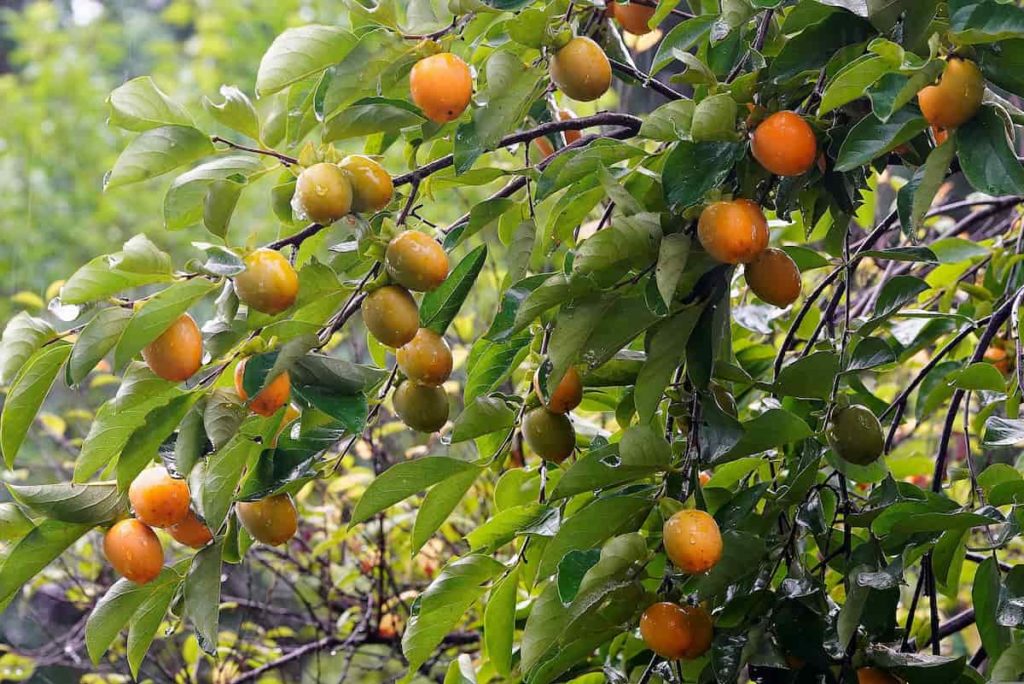
12. Carambola (star fruit)
Carambola is the fruit of Averrhoa carambola, a tree native to tropical Southeast Asia and also known as star fruit. This star-shaped fruit is also called Kamarkha in Hindi and has a waxy texture on top. The pulp of this fruit is very smooth and juicy with very little sweetness. Although it often acquires a sweet and sour taste after it is fully cooked. It is found in abundance from West Bengal to South India.
Conclusion
The term “exotic fruit” is used mostly in developed countries to refer to some tropical fruit unknown to consumers in developed countries or too many of them. Growing exotic fruit plants adds a special touch to your garden as they grow in beautiful shapes and have unique flavors. The cost of exotic fruit production is high. Thus, having an additional market becomes even more beneficial for exotic fruit growers. The increased demand has increased the overall product profit.
- Types of Pesticides Used in Agriculture: A Beginner’s Guide
- Economical Aquaculture: A Guide to Low-Budget Fish Farming
- 15 Common Planting Errors That Can Doom Your Fruit Trees
- How to Make Houseplants Bushy: Effective Tips and Ideas
- Innovative Strategies for Boosting Coconut Pollination and Yield
- Pollination Strategies for Maximum Pumpkin Yield
- The Complete Guide to Chicken Fattening: Strategies for Maximum Growth
- Natural Solutions for Tulip Problems: 100% Effective Remedies for Leaf and Bulb-Related Issues
- Revolutionizing Citrus Preservation: Towards a Healthier, Greener Future
- Natural Solutions for Peony Leaf and Flower Problems: 100% Effective Remedies
- Maximizing Profits with Avocado Contract Farming in India: A Comprehensive Guide
- Natural Solutions for Hydrangea Problems: 100% Effective Remedies for Leaf and Flowers
- The Ultimate Guide to Choosing the Perfect Foliage Friend: Bringing Life Indoors
- From Sunlight to Sustainability: 15 Ways to Use Solar Technology in Agriculture
- The Ultimate Guide to Dong Tao Chicken: Exploring from History to Raising
- The Eco-Friendly Makeover: How to Convert Your Unused Swimming Pool into a Fish Pond
- Mastering the Art of Delaware Chicken Farming: Essentials for Healthy Backyard Flocks
- 20 Best Homemade Fertilizers for Money Plant: DIY Recipes and Application Methods
- How to Craft a Comprehensive Free-Range Chicken Farming Business Plan
- Brighten Your Flock: Raising Easter Egger Chickens for Beauty and Bounty
- How to Optimize Your Poultry Egg Farm Business Plan with These Strategies
- Subsidy for Spirulina Cultivation: How Indian Government Schemes Encouraging Spirulina Farmers
- Ultimate Guide to Raising Dominique Chickens: Breeding, Feeding, Egg-Production, and Care
- Mastering the Art of Raising Jersey Giant Chickens: Care, Feeding, and More
- Ultimate Guide to Raising Legbar Chickens: Breeding, Farming Practices, Diet, Egg-Production
- How to Raise Welsummer Chickens: A Comprehensive Guide for Beginners
- How to Protect Indoor Plants in Winter: A Comprehensive Guide
- Ultimate Guide to Grow Bag Gardening: Tips, Tricks, and Planting Ideas for Urban Gardeners
- Guide to Lotus Cultivation: How to Propagate, Plant, Grow, Care, Cost, and Profit
- Agriculture Drone Subsidy Scheme: Government Kisan Subsidy, License, and How to Apply Online
- Ultimate Guide to Raising Araucana Chickens: Breed Profile, Farming Economics, Diet, and Care
- Bringing Hydroponics to Classroom: Importance, Benefits of Learning for School Students
- Ultimate Guide to Raising Polish Chickens: Breed Profile, Farming Economics, Diet, and Care
- Ultimate Guide to Raising Australorp Chickens: Profile, Farming Economics, Egg Production, Diet, and Care
- Silkie Chicken Farming: Raising Practices, Varieties, Egg Production, Diet, and Care
- Sussex Chicken Farming: Raising Practices, Varieties, Egg Production, Diet and Care
Excellent Information about exotic fruits
What about investments and profit . What about time period from sowing to harvesting .